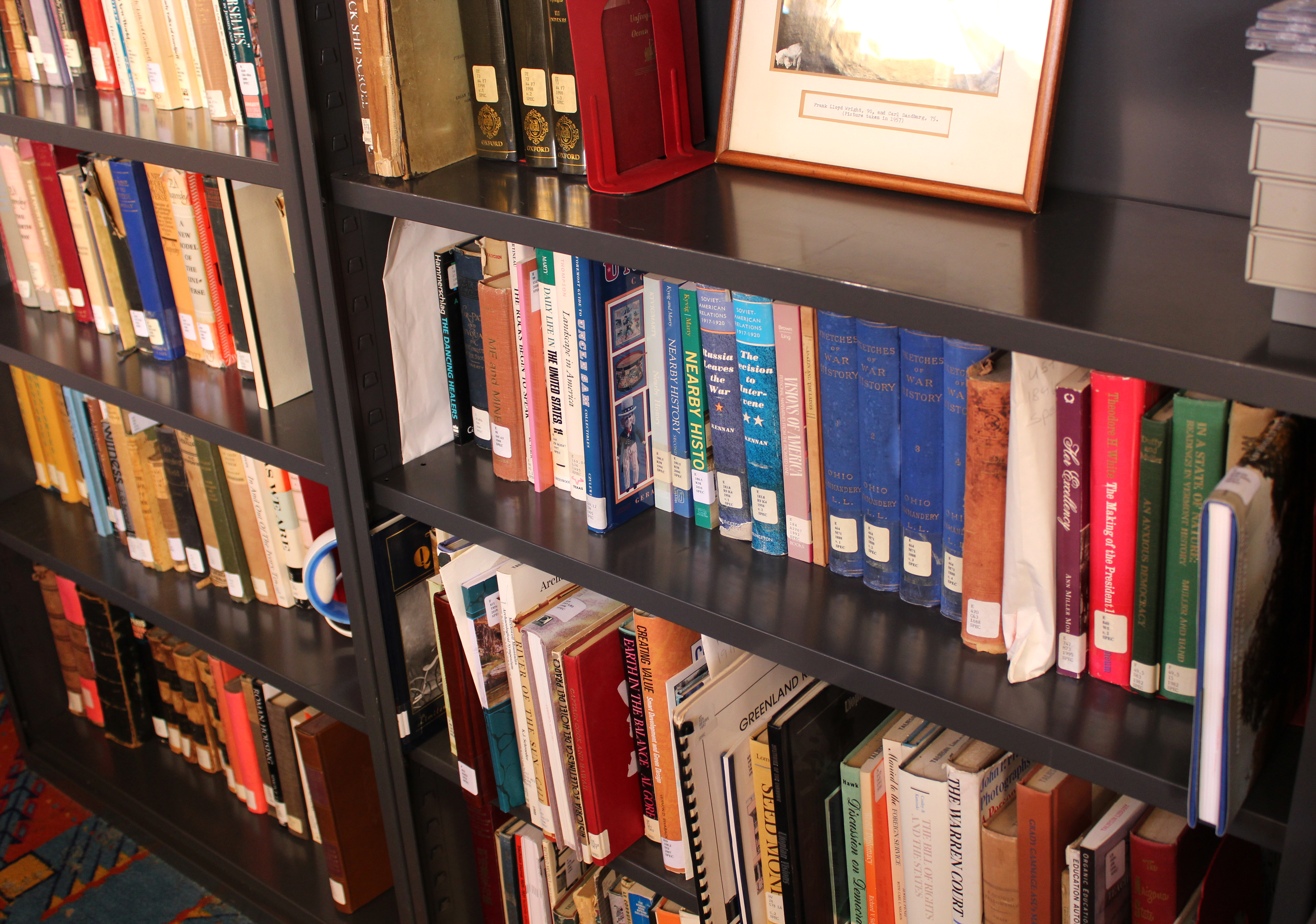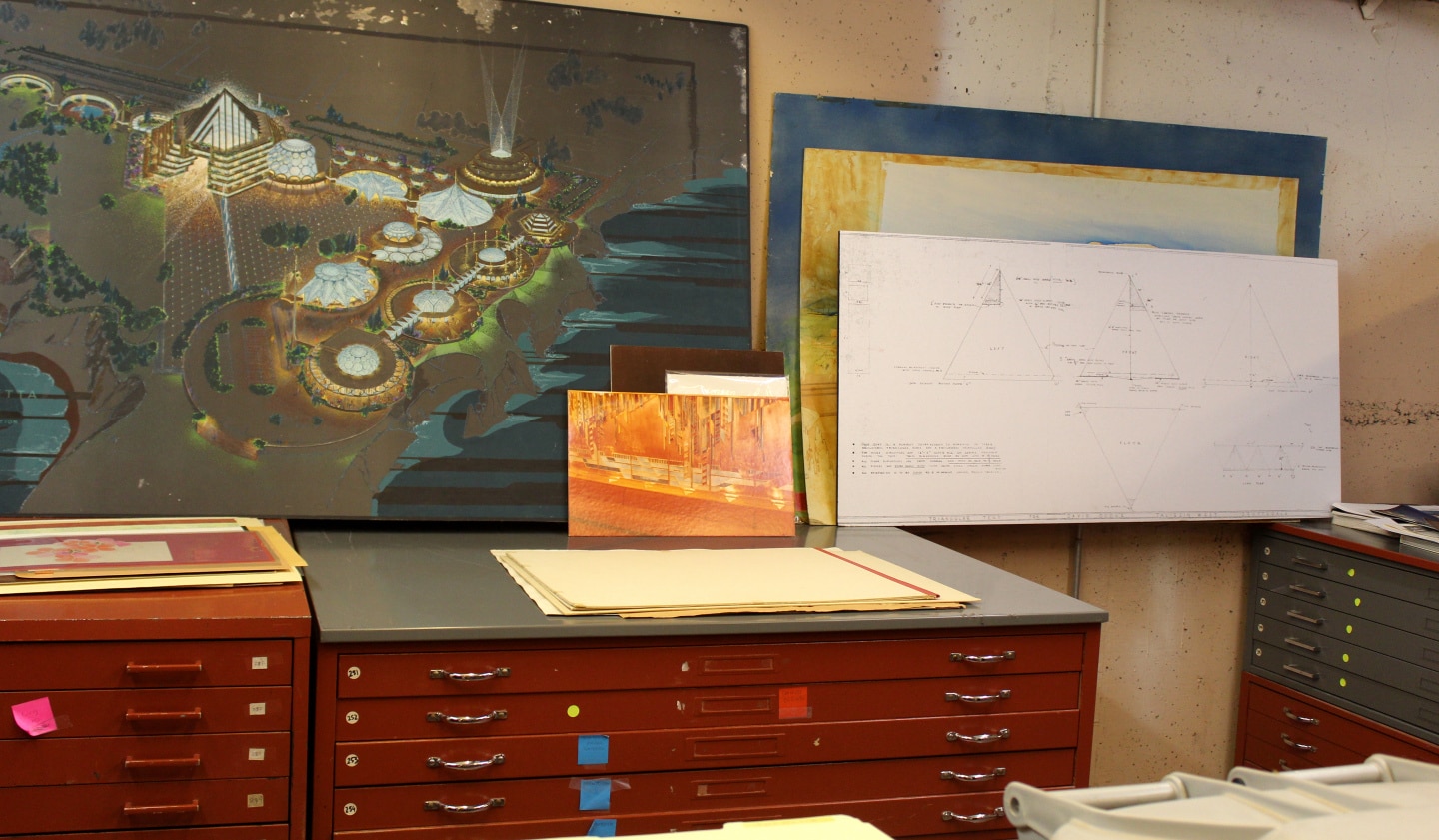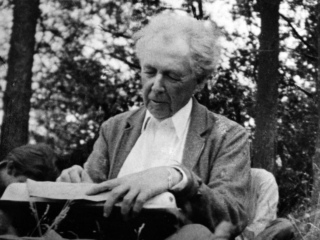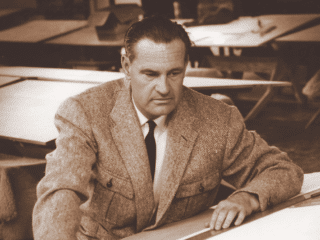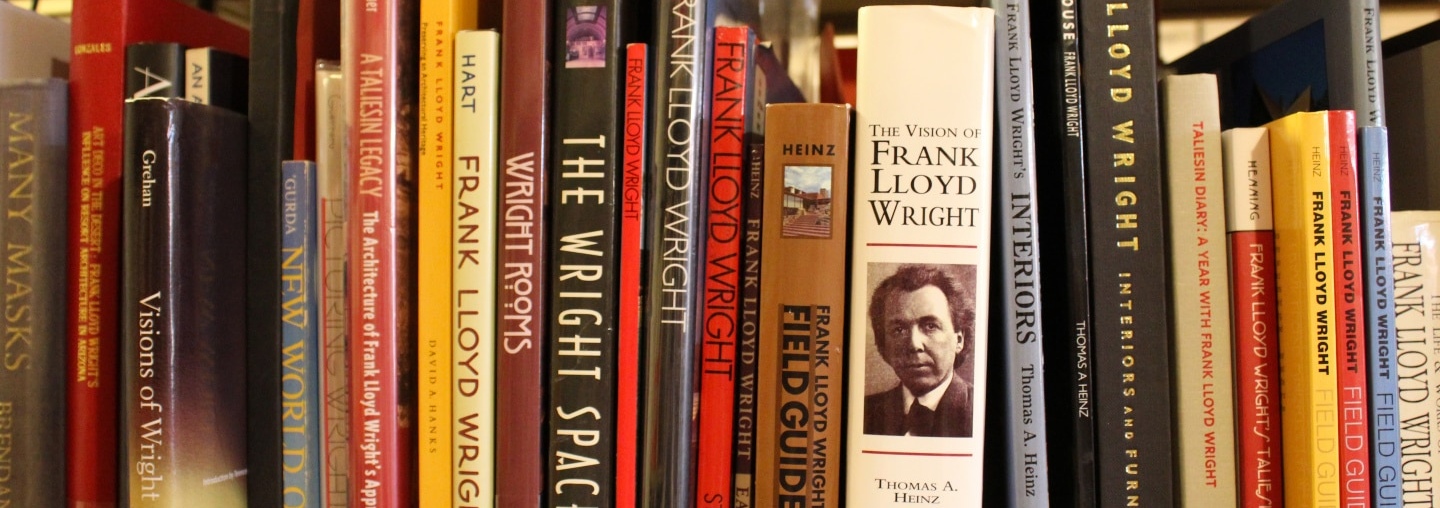
Did you know there’s a library at Taliesin West?
Frank Lloyd Wright Foundation | Apr 10, 2019
Since it was first established in 1983, the William Wesley Peters Library at Taliesin West has grown into one of the most extensive collections of architecture and Frank Lloyd Wright-related books, holding more than 38,500 catalogued books.

In celebration of National Library Week, we’re highlighting one of Taliesin West’s greatest resources – the William Wesley Peters Library. The library, established in 1983, was named after William Wesley Peters, an architect, Wright apprentice, and Wright’s son-in-law. Today, the library contains one of the strongest retrospective architecture collections.
The library lives as organically as the building it’s found in, with the collection continuing to grow and respond to the needs of the students, staff, and scholars who access it. The collection includes 38,500 catalogued books (and growing), a great amount of architecture periodicals, special and rare collections, and an impressive variety of reference materials.
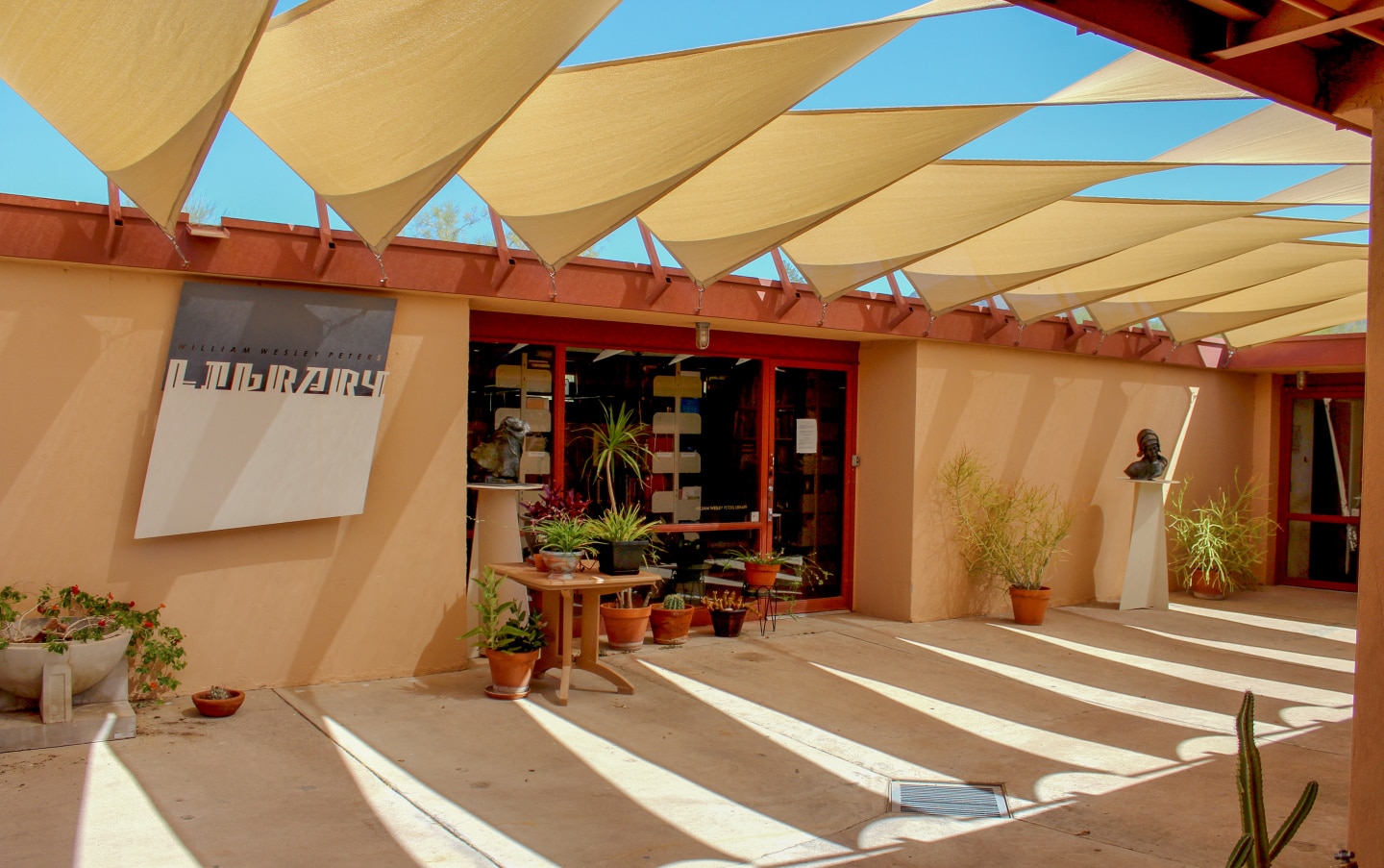
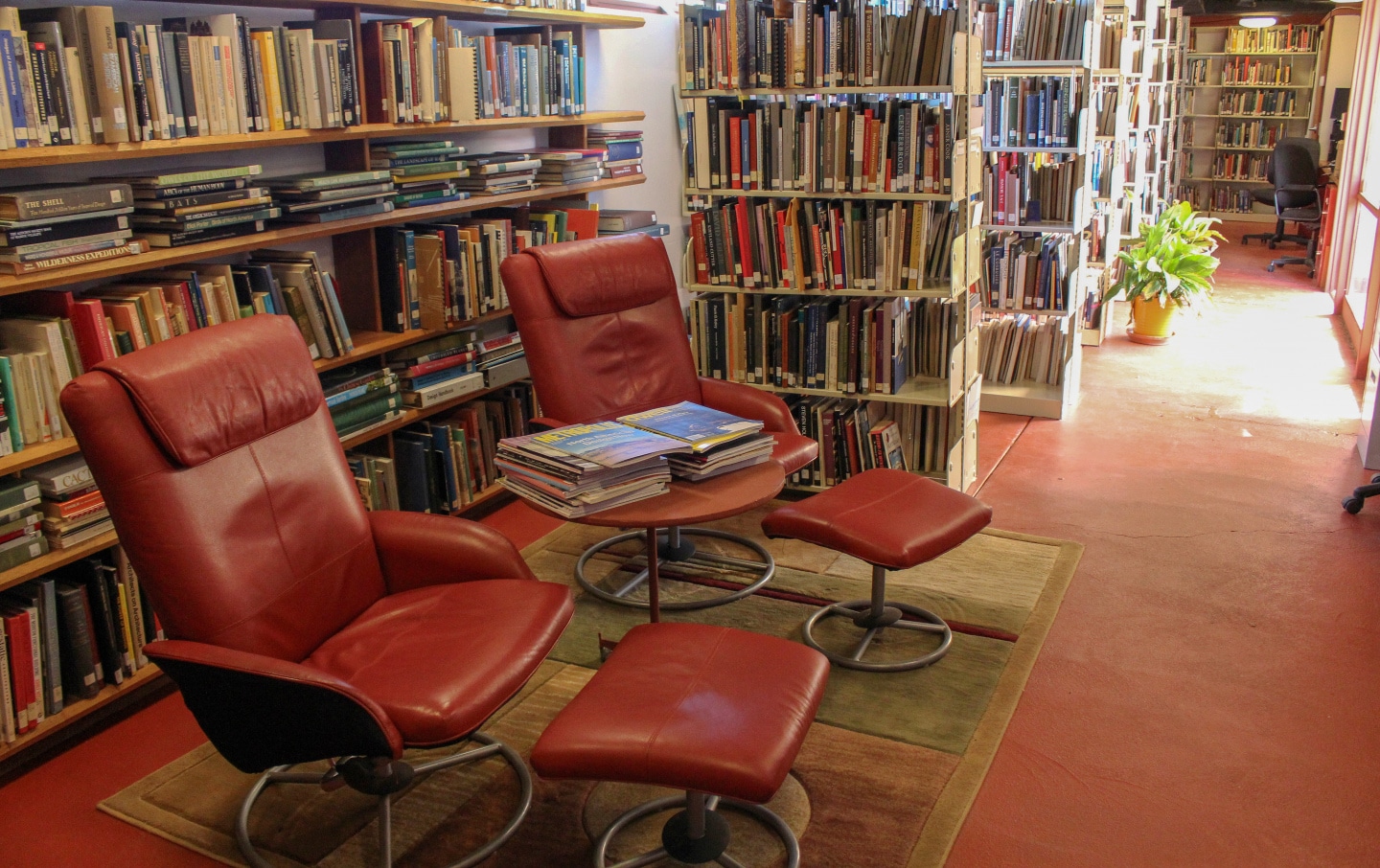

Although the library is not open to the public, it serves as an invaluable resource for Frank Lloyd Wright Foundation staff, School of Architecture at Taliesin students and faculty, and researchers alike.
The library also houses the archives of Taliesin Associated Architects (TAA), the legacy architecture firm that was created by apprentices after Wright’s passing. This includes original project material generated by the firm including drawings, correspondence files, photos, and more from some of Wright’s apprentices including William Wesley Peters, Ling Po, John Rattenbury, Charles Montooth, Thomas Casey, John Howe, Stephen Nemtin, David Dodge, Vernon Swaback, Arnold Roy, Alan Davison, and many more.
These materials are fundamental to the work of the Foundation and School. The library’s immense collection has been maintained by Elizabeth Dawsari for over 30 years. Along with cataloging all the works in the collection, Dawsari also remotely runs the library at Taliesin in Wisconsin and works with a volunteer to digitize the presentation materials TAA architects prepared for clients, and Box Project presentations created by Wright apprentices.
“In this information age, there’s a tremendous amount of information available to researchers electronically,” Dawsari said. “However, many primary resources and published resources are not available digitally therefore the library is an irreplaceable resource.”
Dawsari feels that, even though there’s a great deal of information available online, there’s something special about holding a book in your hands.
